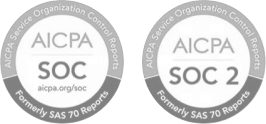Leased Employment
Article Navigation
A leased employee is an individual officially employed by a staffing or leasing agency but works on assignment for a client business. These employees perform tasks and projects for the client under temporary or project-based arrangements. The leasing agency is the employer of record, managing payroll, benefits, and other HR tasks. Leased employees are commonly used in situations involving seasonal workloads, project-based staffing, or when specialized expertise is needed quickly.
Employee Leasing
Employee leasing refers to a contractual agreement in which a staffing firm provides workers to a client company. While these employees perform work on behalf of the client, they remain on the staffing agency’s payroll. The leasing firm handles all related human resources functions, including:
- Payroll administration
- Benefits enrollment
- Tax withholdings and filings
- Employee onboarding and documentation
Employee leasing was once used interchangeably with Professional Employer Organizations (PEOs), but today the term specifically relates to temporary staffing models, not co-employment.
Professional Employer Organization (PEO)
A PEO is a firm that provides comprehensive HR services under a co-employment model. In a PEO relationship, the client business retains day-to-day control over employees while the PEO becomes the co-employer of record for tax and benefit purposes. Unlike employee leasing agencies, PEOs do not supply employees. Instead, they manage HR functions for your existing workforce, such as:
- Payroll and tax filing
- Health and retirement benefits
- Workers’ compensation
- Risk and safety management
- Regulatory compliance
- Talent strategy and performance reviews
Co-Employment
Co-employment is a legal relationship between a client company and a PEO where both share employment responsibilities. The client oversees daily work responsibilities, staffing decisions, and job performance, while the PEO manages HR compliance, payroll processing, and employee benefits. The benefit of co-employment is access to enterprise-level HR infrastructure, without giving up operational control of the workforce.
Differences Between Leased Employees and PEO Co-Employment
- Staffing: Leasing agencies supply workers. PEOs do not.
- Employment Relationship: Leased workers are fully employed by the agency. In PEOs, employees are jointly employed (co-employment).
- Employee Retention: Leased employees return to the agency after a project ends. PEO employees stay with the business, even if the PEO relationship ends.
- Scope of Services: Leasing agencies handle staffing and employment logistics. PEOs provide comprehensive HR services for your own employees.
Benefits of Leased Employees
- Rapid Hiring: Agencies can fill roles quickly due to an active talent pool.
- Flexibility: Ideal for project work, seasonal spikes, or temporary gaps.
- Reduced Admin: Outsourcing tasks like recruiting, onboarding, and background checks.
- Skill Access: Agencies can provide experts in specialized roles (e.g., IT, healthcare).
- Trial-to-Hire: Some leased employees may become full-time if they perform well.
Risks of Leased Employees
- Intellectual Property Exposure: Leased employees may work for competitors later, risking trade secrets.
- Loss of Tax Credits: Employers using leased workers may not qualify for IRS incentives like the Work Opportunity Tax Credit (WOTC).
- Higher Benefits Costs: Smaller headcounts due to leasing can affect employer group benefits pricing.
- Lack of Cultural Integration: Temporary employees may not integrate as deeply into company culture.
Employer of Record (EOR)
The Employer of Record is the legal employer responsible for compliance, payroll taxes, and employee documentation. In leasing arrangements, the staffing agency is the EOR. In co-employment, both the PEO and the client share this responsibility, with specific legal distinctions defined in the co-employment agreement.
Tax and Compliance in Employee Leasing
Leased employees are not reported on the client business’s payroll for tax purposes. Instead, the leasing agency handles:
- FICA and FUTA payments
- Income tax withholdings
- Wage reporting (W-2 issuance)
- Workers’ compensation classification
This setup can streamline tax obligations for the client but requires careful contract management.
Benefits Administration
- Leased Employees: Receive benefits from the leasing agency (if offered).
- PEO Employees: Access benefits through the PEO, often at competitive group rates similar to large corporations. These include:
- Group health plans
- Retirement savings (401(k))
- Commuter and wellness benefits
- Employee assistance programs
PEO Considerations for Employers
When evaluating a PEO partnership, businesses should assess:
- Service offerings (e.g., HR consulting, compliance guidance)
- Cost structure (per employee or percent of payroll)
- Risk sharing and liability boundaries
- Technology platforms for payroll and benefits
- Certification (e.g., IRS-certified CPEO status)
- Flexibility in cancellation or renewal terms
How to Choose Between Employee Leasing and a PEO
Employee Leasing May Be Best If:
- You need short-term, project-based, or seasonal workers
- You want minimal HR involvement for temporary roles
- You’re in a low-risk or highly transactional environment
PEO Co-Employment May Be Best If:
- You want to retain and develop your workforce
- You need long-term HR infrastructure but lack internal expertise
- You want access to large-company benefit plans
- You’re growing and want to ensure compliance as headcount increases
Conclusion
Understanding the distinctions between leased employees, staffing firms, and PEOs is critical for making strategic HR decisions. Each model offers different benefits and risks depending on your workforce needs, growth stage, and internal capabilities. Whether you’re hiring for a season or scaling up your company, aligning with the right employment partner can improve compliance, efficiency, and employee satisfaction.































 Back
Back